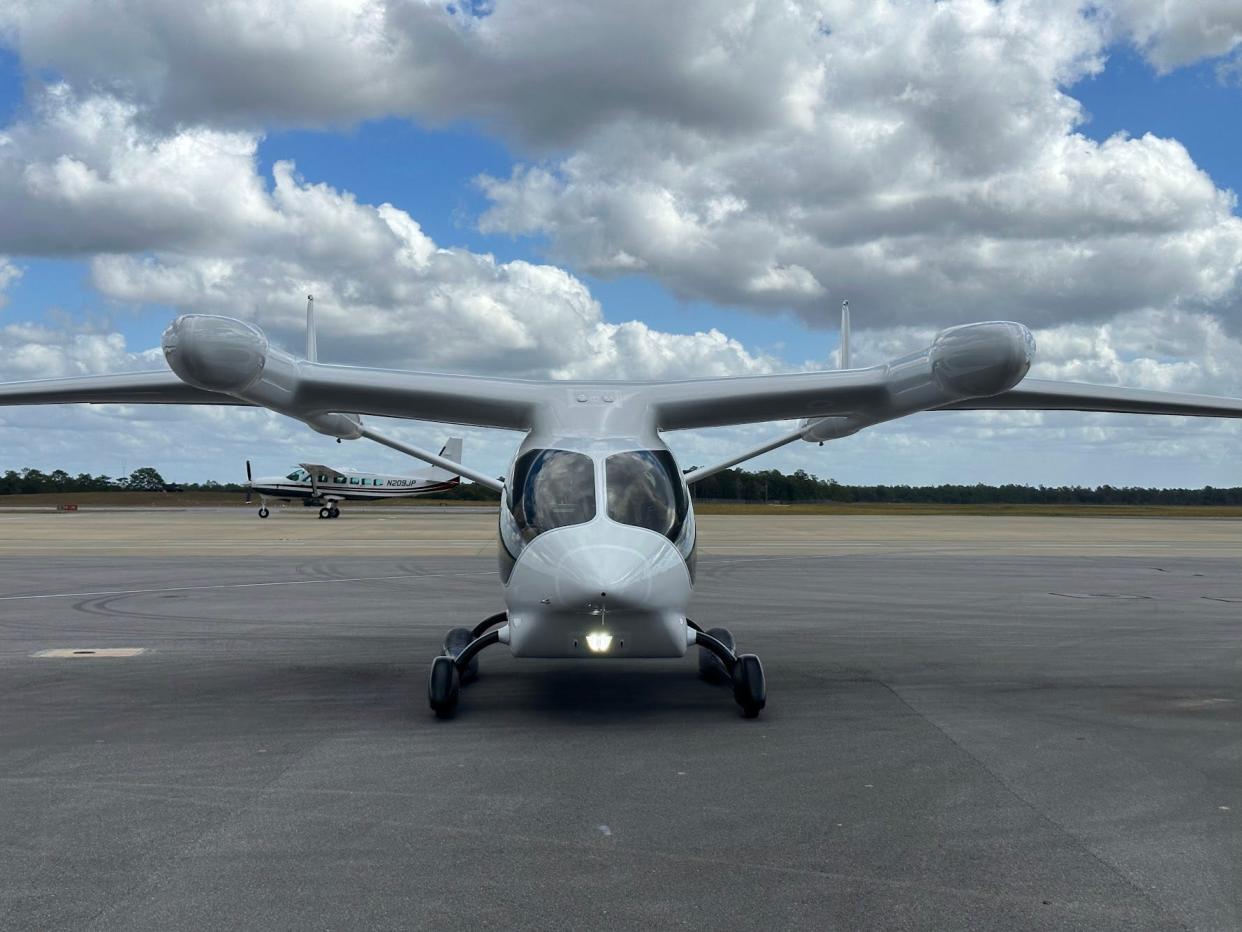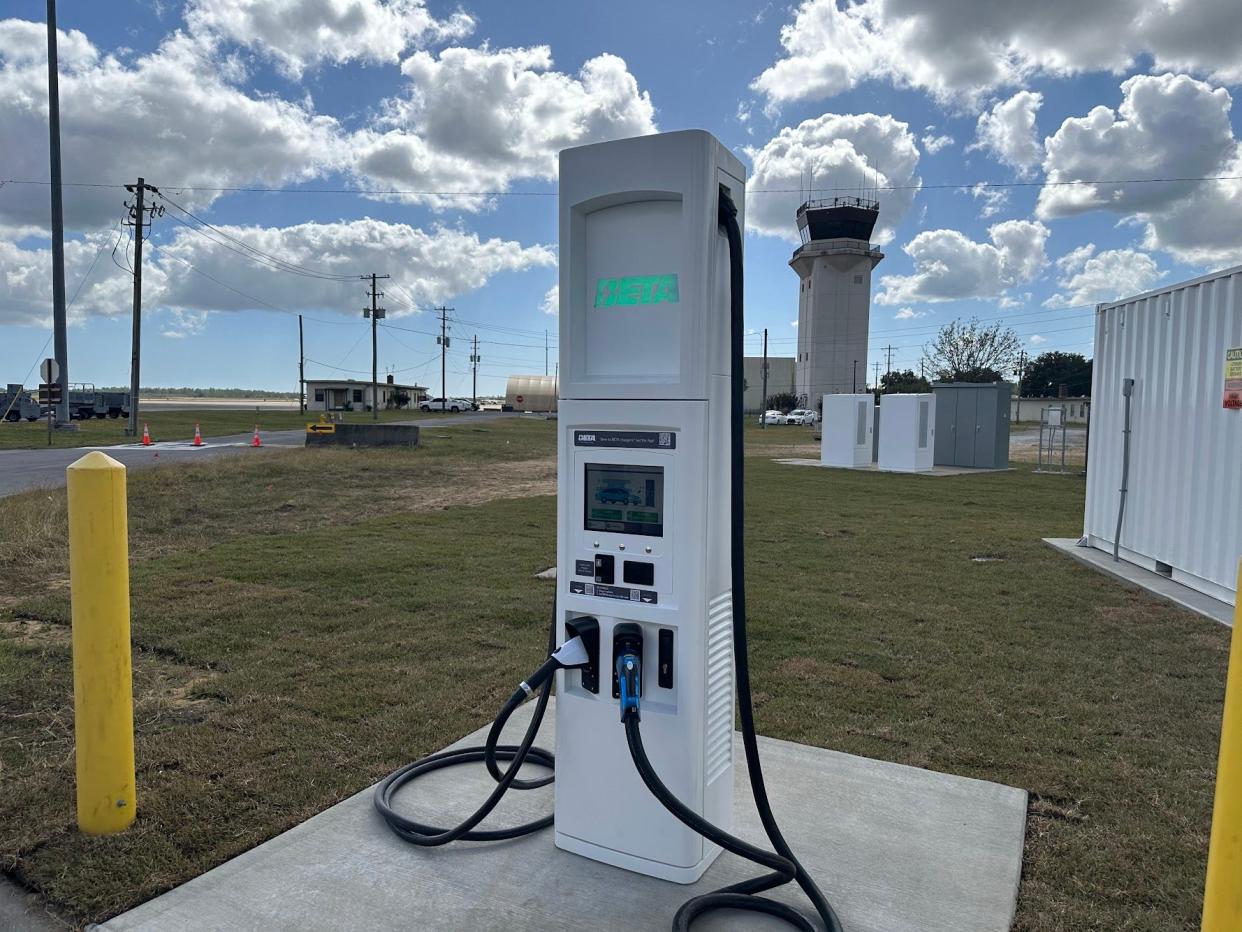First all-electric aircraft arrives at Duke Field for military testing
DUKE FIELD - Onlookers who attended the delivery of the BETA Technologies ALIA to Duke Field for a three-month testing session on Thursday saw the aircraft before they heard it.
The all-electric manned aircraft landed after a brief aerial demonstration, the work began for the 413th Flight Test Squadron of Duke Field and AFWERX, the development arm of the U.S. Air Force, as for the next three months, they will conduct a series of tests on the aircraft to determine the viability of an electric aircraft for future military use.
Here's what we know.
What is BETA Technologies?
Founded in 2017 by Kyle Clark in Burlington, Vermont, BETA Technologies builds electric aviation systems for a more sustainable mode of transportation.
“Deploying ALIA for experimentation and training at Duke Field is the natural next step in our partnership," Clark said. "We look forward to working hand-in-hand with the U.S. Air Force over the next few months as we work together to assess how the economic, sustainability and energy independence benefits of electric aviation can serve our military."
Along with the U.S. Air Force, BETA has contracts with companies such as UPS, Bristow and the U.S. Army.
What is the ALIA?
The ALIA is the second experimental aircraft that the company has produced. There are two models currently being tested. One is the ALIA CTOL (conventional takeoff and landing), which is the version undergoing testing.

The ALIA VTOL (vertical takeoff and landing) variant is being tested at BETA headquarters in Vermont. That version has the propulsion motor the CTOL has, along with four rotors located on the two booms that run parallel to the body to achieve vertical flight.
“We are going to learn a lot of things about these aircraft," said Col. Elliott Leigh, director of AFWERX. "We’ve already seen potential use cases for things like personnel recovery, for aeromedical evacuation, and even just airlift for small items we need to move around so that we are not scheduling a large transport aircraft to do work that could be done on a lighter platform."
Eventually, the aircraft could be used for combat situations.

The ALIA is powered by five batteries in the belly of the fuselage. It has a conventional range of 250 nautical miles with a maximum distance of 386 miles. A charge to full capacity can take less than an hour to complete.
In September, BETA installed a Level 3 DC fast charger for the ALIA and support vehicles, the first electric aircraft charging station on a Department of Defense installation.
Clark said the operational costs of the aircraft are about half of what it would cost to run a traditional aircraft. For the eVTOL variant, the cost is approximately 30% less than a helicopter.
For the last leg of the 1,700-mile flight from Vermont, the ALIA used about $10 worth of electricity for a 114-mile trip from Dothan, Alabama, to Duke Field
What will the testing process look like?
BETA will supply all the pilots and aircrew for the testing process, while Duke Field officials will oversee the testing process. Air Force officials will use all data collected to determine the future of electric aircraft as a viable option.
In addition to a mobile simulator that can give pilots virtual seat time, the 413th Flight Test Squadron will test all aspects of the vehicle during the three-month training period.
One mission will be to test the infrared signature of the aircraft. Officials know that the readings are low, but this will give the Air Force information on future development and allow the design process to change.
More options for child care Crestview shows full support for Air Force's plan to build new child development center
"An ideal result would is to get out and expose issues on the airplane," said Maj. Riley Livermore, 413th Flight Test Squadron Flight commander. "Every time we go out to test fly, we're not trying to prove that the math works. We're trying to learn the stuff we don't know."
What's next?
As BETA and the Air Force continue to test the ALIA, the process for the aircraft to gain FAA certification is underway.
It's expected to enter service by 2025 or 2026.
This article originally appeared on Northwest Florida Daily News: US Air Force begins testing electric aircraft at Duke Field
